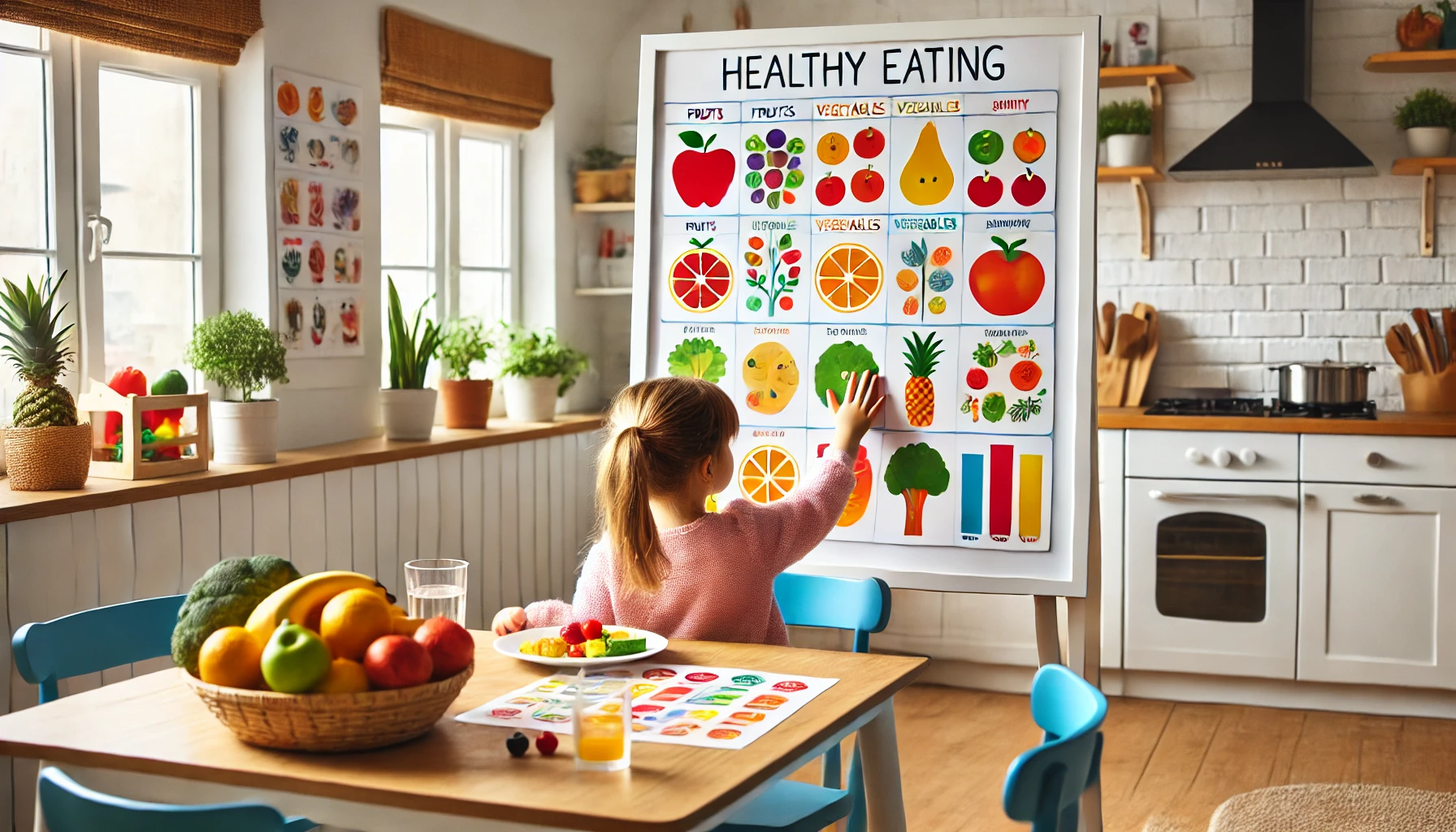Teaching young children about healthy eating sets the stage for a lifetime of good choices, strong bodies, and positive relationships with food. While young kids don’t need to understand all the science of nutrition, they can learn the basics—like what foods help them grow, how to balance meals, and how to listen to their bodies. The key is to keep lessons fun, hands-on, and pressure-free.
Why Teaching Nutrition Early Matters
- Supports physical growth and brain development
- Encourages long-term healthy habits
- Reduces picky eating over time
- Promotes independence and decision-making
- Fosters curiosity about where food comes from
1. Introduce Food Groups in a Simple Way
Use visuals and comparisons children understand.
Activity Idea:
- Use a plate divided into sections: fruits, vegetables, grains, protein, and dairy.
- Play a “food group matching” game with toy foods or cut-out pictures.
- Ask: “Which foods help you run fast? Which help your brain?”
What Kids Learn:
- That different foods do different jobs.
- How to build a balanced meal.
- The concept of variety on a plate.
2. Get Them Involved in Meal Prep
Participation increases interest and willingness to try new foods.
Activity Idea:
- Let kids wash vegetables, stir ingredients, or arrange fruit on a plate.
- Use cookie cutters to make fun food shapes.
- Name the meal together: “This is your Superpower Salad!”
What Kids Learn:
- How food is made and where it comes from.
- Confidence and pride in preparing food.
- Ownership of their choices.
3. Talk About What Food Does for the Body
Help kids link food to how they feel and grow.
Activity Idea:
- Say: “Carrots help you see, and bananas give you energy.”
- Make a “food powers” chart with pictures: strong bones, quick thinking, happy tummy.
- Ask: “How do you feel after eating that snack?”
What Kids Learn:
- That food is fuel.
- Mind-body awareness.
- How to make choices that support how they want to feel.
4. Practice the “Sometimes” vs. “Everyday” Food Rule
Avoid labeling foods as “good” or “bad.”
Activity Idea:
- Say: “Cookies are yummy sometimes, but fruits and veggies help us every day.”
- Sort food pictures into “everyday” and “sometimes” piles.
- Use real mealtime examples: “Let’s balance this with something crunchy and green!”
What Kids Learn:
- That it’s okay to enjoy treats without shame.
- How to balance indulgence and nourishment.
- The value of moderation.
5. Encourage Mindful Eating
Help children tune into their hunger and fullness cues.
Activity Idea:
- Eat slowly and talk about flavors, textures, and smells.
- Pause during meals to ask: “Is your tummy still hungry?”
- Avoid forcing bites—let kids listen to their body.
What Kids Learn:
- How to trust their natural signals.
- To eat with attention, not distraction.
- That food is a full-sensory experience.
6. Use Books and Stories About Food
Stories make food learning fun and relatable.
Activity Idea:
- Read books like The Very Hungry Caterpillar or I Will Never Not Ever Eat a Tomato.
- Act out the stories with real or play food.
- Create your own story: “Once upon a time, a strawberry superhero…”
What Kids Learn:
- How others explore food and choices.
- Vocabulary and imagination through food.
- Emotional connections to mealtime.
7. Explore Where Food Comes From
Understanding food origins builds curiosity and respect.
Activity Idea:
- Visit a farmer’s market or garden.
- Watch videos of fruits being harvested or bread being baked.
- Grow herbs or vegetables in a pot at home.
What Kids Learn:
- The journey from farm to table.
- Respect for farmers, animals, and the Earth.
- How nature provides what we need.
8. Celebrate Food in Positive Ways
Make food a joyful and inclusive topic.
Activity Idea:
- Try a new fruit each week and give it a funny name.
- Take pictures of your child’s colorful meals and make a “My Healthy Plate” scrapbook.
- Use a sticker chart to track trying new foods—not finishing plates.
What Kids Learn:
- That exploring food is exciting.
- That small steps matter.
- That health isn’t about pressure—it’s about enjoyment.
Final Thoughts
Teaching young children about healthy eating and nutrition isn’t about counting calories or controlling choices—it’s about helping them build a joyful, respectful, and curious relationship with food. Through stories, hands-on experiences, and open conversations, you can raise a child who loves to learn about what fuels their body and brings their meals to life.
